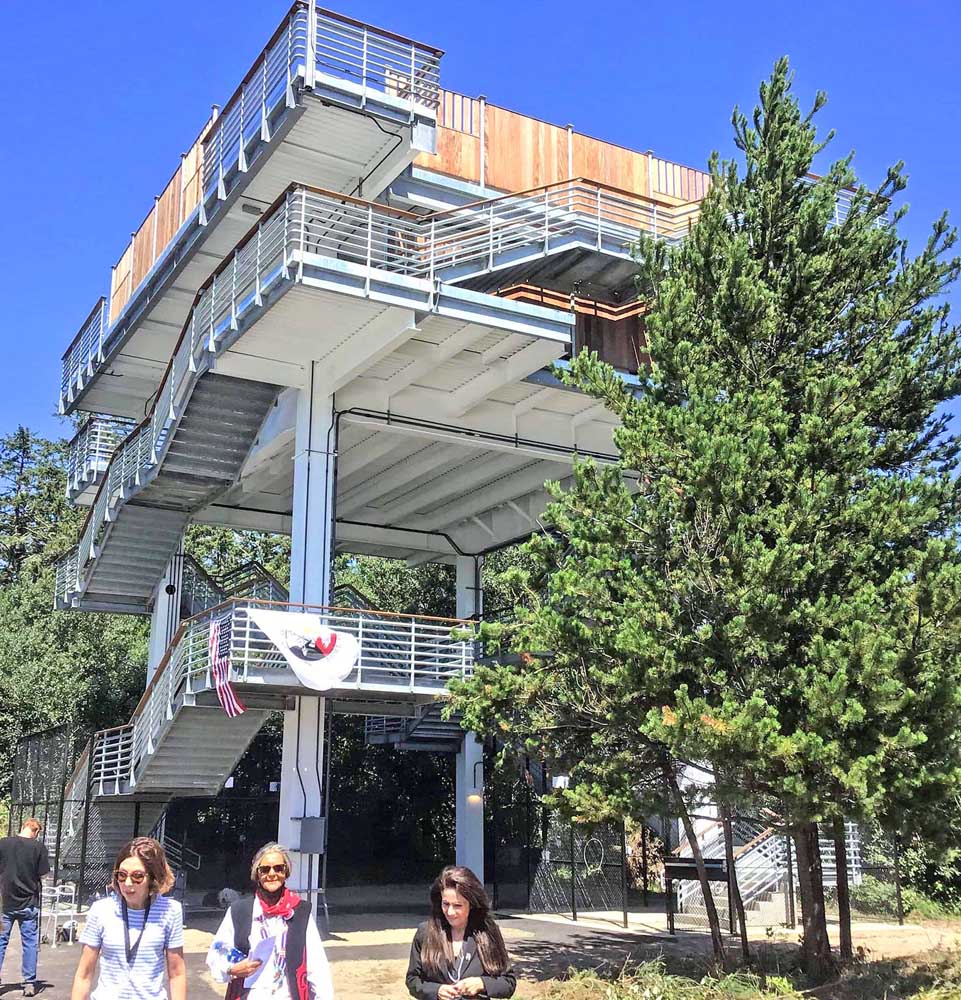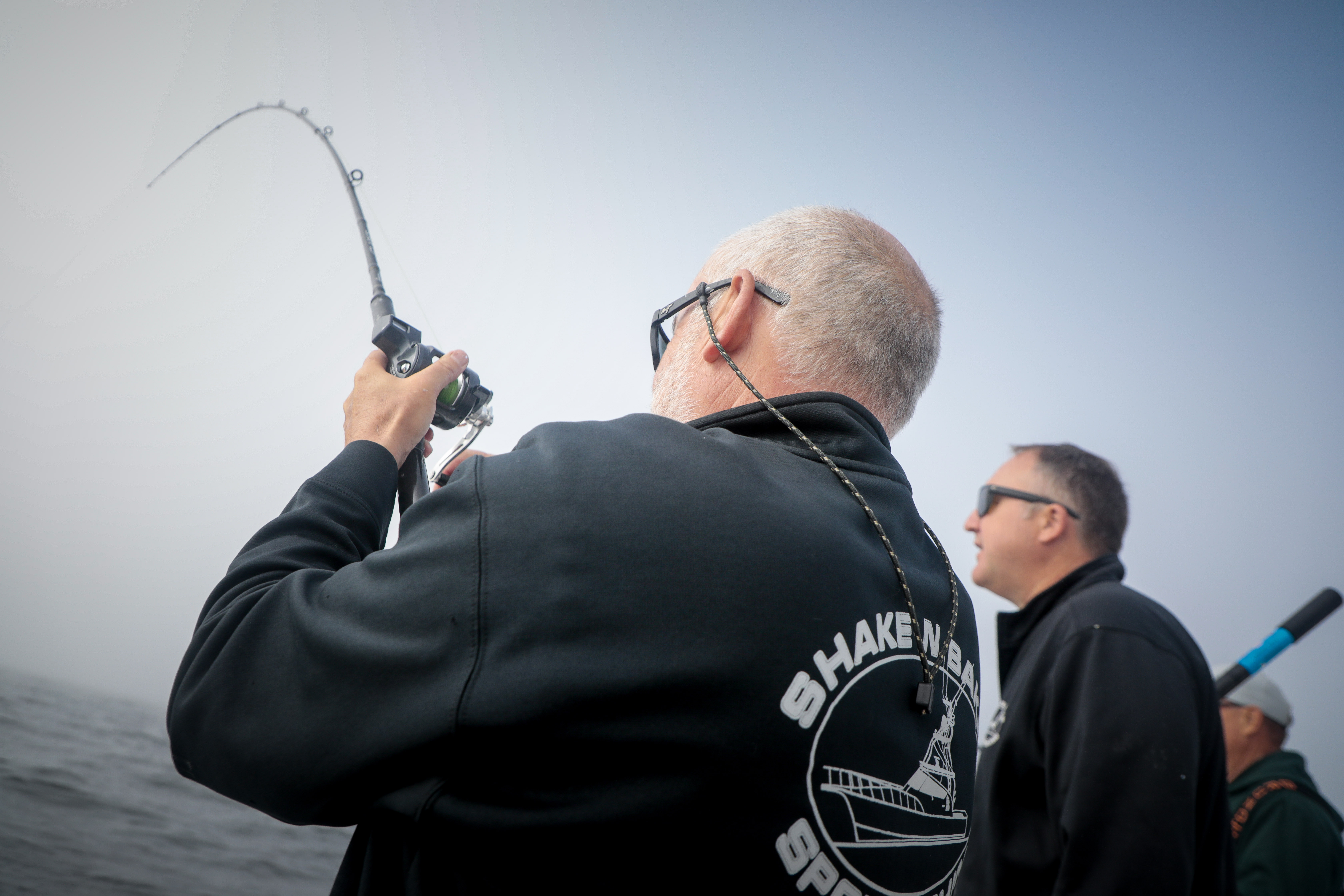Funding push continues for Long Beach tsunami tower
Published 11:02 am Thursday, January 16, 2025

- Long Beach officials are continuing a quest for a vertical tsunami evacuation tower like this one in Tokeland that the mayor and other administrators recently toured.
LONG BEACH — City officials gave off an aura of cautious optimism while they debriefed councilors on the latest developments in their push to win federal funding for what would be the first tsunami vertical evacuation structure on the peninsula.
Trending
The update came after top Long Beach officials, including mayor Sue Svendsen and city administrator David Glasson, toured the country’s first tsunami tower in Tokeland while the city is in the midst of trying to secure millions of dollars in federal funding for a tower of its own.
The city is vying for state and federal funding through the Washington Emergency Management Department (EMD). The state agency is distributing federal dollars that have been awarded through Building Resilient Infrastructure and Communities, or BRIC, a Federal Emergency Management Agency grant program that is focused on pre-disaster mitigation projects.
Long Beach previously applied for EMD’s first round of funding, and councilors in November authorized staff to sign and submit needed documentation after the city was invited to complete a full application. The city expects to submit its BRIC application this spring, which involves answering hundreds of questions.
Trending
If the funding pursuit proves successful, FEMA would cover 90% of the total cost of the structure due to Long Beach’s designation as an Economically Disadvantaged Rural Community. The city and EMD would cover just 5% each, representing a significant savings for the city when it otherwise would be on the hook for at least 12.5%.
Should it ultimately come to fruition, the tsunami tower would be located behind the Long Beach Elementary building — the same location as the proposed cement berm that was scuttled in 2017. Long Beach was far along in the design process when it received a study that indicated the 32-foot berm would need to be nearly 15 feet taller than what the city had been designing for in the event of a worst-case tsunami, halting the project.
The city will work with an architect on a rough design of the structure during the application phase to help narrow down estimated costs, according to Glasson.
Tokeland tower tour
City officials late last year descended upon Tokeland to visit the Shoalwater Bay Indian Tribe’s vertical evacuation structure that was erected in 2022. With a price tag north of $4 million, including more than $3 million in grant funding from FEMA, the tower stands 50 feet tall, 40 feet wide and is designed to safely hold at least 400 people.
The tour of the Shoalwaters’ evacuation structure was “super informative” despite rough weather, according to Svendsen. The tribe’s tower is about half as tall as the structure Long Beach originally intended on, with the mayor saying the city is now looking at expanding the height of the proposed tower.
‘We don’t know if there’s going to be money for these towers in the future, so we want to capitalize as much as we can on the grant and we’ll see how much we can get.’
Sue Svendsen, Long Beach mayor
“We’re looking now at maybe even going further by adding another layer, because it’s less expensive to go up another layer than it is to spread out,” said Svendsen, noting it’s a decision that will need to be made at the outset while there’s a reliable funding source. “We don’t know if there’s going to be money for these towers in the future, so we want to capitalize as much as we can on the grant and we’ll see how much we can get.”
Evacuation structures are an economy of scale, city administrator David Glasson said, with the initial per-person cost set at roughly $20,000. Under the same grant program that Long Beach is now competing for, FEMA provided $15.2 million of the $16.7 million in total funding for a tsunami tower in Westport that will support more than 1,000 people once constructed, with EMD and the City of Westport covering the remaining costs.
“My argument in all this is right now it’s 19-to-1 [in terms of the] cost,” said Glasson, referring to the just 5% that the city would be on the hook for under the FEMA grant program. “We’re paying 5%, so for every $50,000 we put into it, we’re getting an extra $950,000. It would be better to overbuild now than to build what’s best for us while the match is there.”
Other takeaways
Providing shelter from the elements — earthquakes and the subsequent tsunamis can strike at any time of the day, day of the month, and month of the year — is also a focal point, with Svendsen saying the design team is working on ways to build in a wind buffer to a tower with three layers. Glasson noted that those seeking refuge on the highest level of the Shoalwaters’s tower would be completely exposed to the weather.
Glasson also mentioned the need of having reliable communication devices like short-wave and ham radios, and said Long Beach has consulted with EMD staff on being outfitted with the necessary equipment.
In terms of non-construction expenditures, Svendsen said the tribe initially spent considerable funds on stocking its tower with MREs — Meals, Ready-to-Eat — but ultimately decided it wasn’t “the best investment of money, because they should only be on the tower for 24 to 48 hours.
“The bigger issue is making sure there’s water, sanitation, toilet possibilities,” she added, citing lighting and electrical concerns as well. “We’re taking a look at things that they advised us they would have done differently.”









